


December 22, 2020
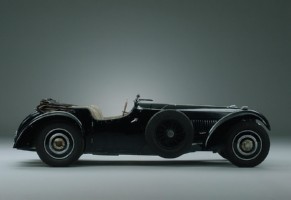
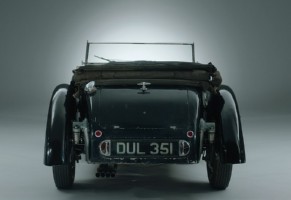
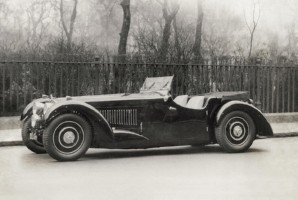


December 20, 2020
 My friend Nik Levecque from Belgium is an expert model builder, I wrote about his models in these pages (and the Bugatti Revue) various times already. He also was one of the winners of this year's BugattiPage contest.
My friend Nik Levecque from Belgium is an expert model builder, I wrote about his models in these pages (and the Bugatti Revue) various times already. He also was one of the winners of this year's BugattiPage contest.
His work has now been recognised internationally, as two of his scale Bugattis were recently decorated in the online 'Euro Scale Modellers 2020' contest:
The Fellow awards were elected by 160 contest participants, from Holland, Belgium, Germany, France, Spain, Gibraltar, Portugal, Italy, Turkey, Bulgaria, Czech Republic, Hungaria, Hong Kong, New Zeland, Brasil, USA, Canada, Ireland and England. More info and pictures on this contest euroscalemodelling.nl/results-online-competition-2020/ More about Nik's models in articles previously published in the Bugatti Revue:
|
|
The Volkswagen Board of Directors has decided that Lamborghini and Ducati will remain part of the group. Bentley will be under the responsibility of Audi to facilitate the luxury brand's transition to electric driving. Bugatti's future is still uncertain.
The future of Volkswagen seems to be in calmer waters now that the Board of Directors of the Volkswagen Group has expressed its support for CEO Herbert Diess. Under the leadership of Diess, the group is engaged in a considerable transformation, especially when it comes to electric models, new software and autonomous technology. However, the Board of Directors is silent about Bugatti, the showpiece of the late Ferdinand Piëch. Previously, Porsche, Bentley and Bugatti were part of the "Sport & Luxury" industry within the Volkswagen Group. Now that Bentley comes under the responsibility of Audi, only Porsche and Bugatti would remain in this group. With that, a possible sale of Bugatti seems to be increasingly likely. CEO Diess said earlier that Volkswagen is "constantly reviewing" its portfolio in the midst of a rapidly changing industry. Time will tell what Volkswagen has in store for Bugatti. Thus: My earlier comment that Mr. Stephan Winkelmann became president of Lanborghini alongside Bugatti, to keep him inside the Volkswagen group when Bugatti will be sold, became much more plausible. Lamborghini remains with VW, and Bugatti will probably be out. Of course, VW will not publish about this before the deal with a buyer (Rimac?) is final. However, their silence about the future position of Bugatti within the VW group in itself is clear enough!
|

December 12, 2020
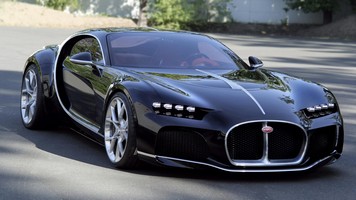 Bugatti has been rather busy developing complete new models which they either did present but did not produce, like the 2009 Galibier, or did develop, but did not even present, like the Bugatti W16 GT, a coupé version of the Galbier with the W16-engine in the front, the 2015 Bugatti Atlantic (on the right, presented on these pages on March 15, 2020 ), a smaller car than the Veyron and Chiron, and with a smaller V8 engine also. Bugatti has been rather busy developing complete new models which they either did present but did not produce, like the 2009 Galibier, or did develop, but did not even present, like the Bugatti W16 GT, a coupé version of the Galbier with the W16-engine in the front, the 2015 Bugatti Atlantic (on the right, presented on these pages on March 15, 2020 ), a smaller car than the Veyron and Chiron, and with a smaller V8 engine also. Another one which was not presented, but was also developed in 2015, is the Type 35D shown here.
The prototype is called the Type 35 D, as if it would be a follow-up to the Type 35 C (wrong of course, as the Type 51 was what followed the T35C).
Like on a proper open-wheel race car, the suspension components and wheels are fully exposed. What is unlike the original, however, are the fat tyres, massive rear diffuser, and super-slim tail lights, with the third brake light neatly integrated into the central strip that runs from front to back. There is no information on what would power this prototype. Electrical maybe, or would it share the V8 engine with the 2015 Atlantic concept? There seems to be no space for the W16 engine. Maybe there is no engine at all?? Clearly visible is that it is rear-wheel drive.


There is not much information on the interior, but we do get to see lots of beautifully finished wood, aluminium, and carbon-fibre trim, along with acres of brown leather. Apart from the ‘EB’ logo on the steering wheel, the centre stack bears more than a passing resemblance to the one in the Chiron’s cabin, especially the digital gear indicator. So do I like it? In fact, no, it seems to me like a stressful try to create a modern version of the GP Bugatti. As the original was perfect from every angle, all attempts at trying to recreate it in a modern fashion are doomed to fail. Do you like it? Well; that is up to you to decide! |

December 6, 2020
|
As you may know, the new VW-Bugatti puts a lot of 3D printed parts in their automobiles, in the "Bolide" even more than in the "standard" Chiron. More about this in the article on my visit to the factory, in 2019. However, more and more people have either their own 3D printer, or have acces to one through a friend or relative or so. And, on-line quite a few toys (as above, quite a cute one, and it's almost Christmas) and miniatures are available. That is, the files, which you need to make the 3D printed model. And they are for free! My friend Bart Oosterling sent me both the above picture of the one which his brother-in-law printed for him, as well as links to the files themselves. The links are given here:
|
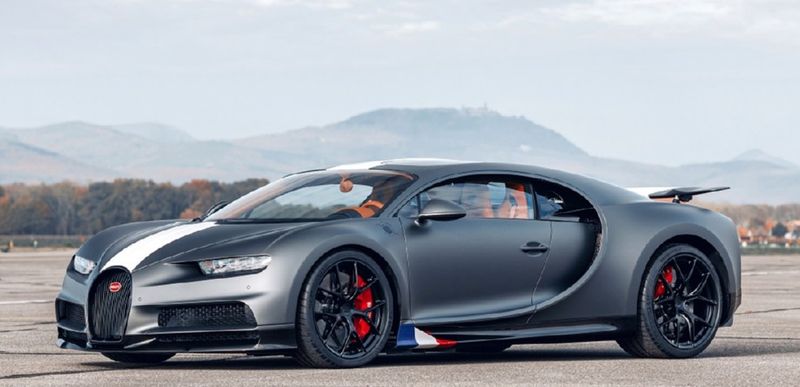
November 25, 2020








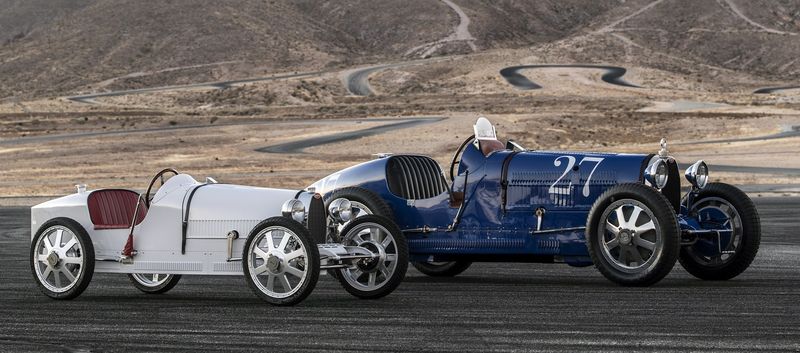
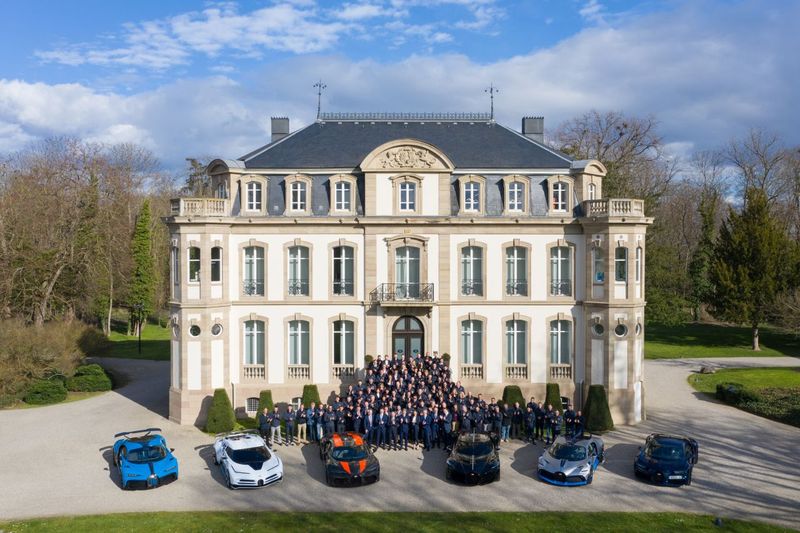
November 17, 2020
|
Message from Stephan Winkelmann,
President at Bugatti Automobiles S.A.S. In a year such as this, many a company goes through hardship, as the current global situation is highly volatile. At Bugatti we consider ourselves fortunate to have a very healthy business, fueled by long-term planning, quick reactiveness, a strong partner network and very passionate customers. We have kept our cool and steered our course, with the dedication, excellence and especially courage that make Bugatti such a unique reality within the automotive industry. We are reaching the end of 2020, and without having the final figures yet I can already say that we are on our way to exceeding all expectations. We have kept our promise of delivering the first Divo to our customers, and also the Chiron stays hot, fueled by the great feedback we get for the Pur Sport. Despite challenging months, we will outperform 2019 and, thus, register the best financial result in modern Bugatti history. This third record year in a row makes me very proud of the Bugatti team – and of the entire Bugatti family.
|
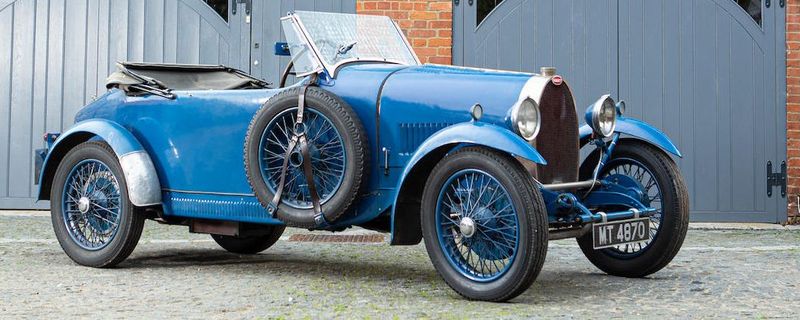
October 31, 2020
RM / Sotheby's "The Elkhart Collection" Auction, October 23 - 24, 2020
Bonhams Auction: The Golden Age of Motoring Sale '1886-1939', London, England, October 30, 2020

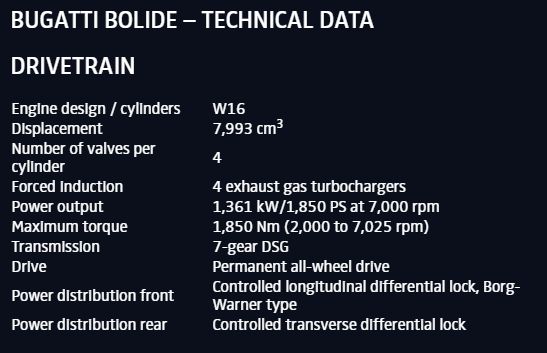




Romano and Chucchetti in a Bugatti T37, at the start of the Mille Miglia, 1930.

Bugatti T251 drawing by Brian Hatton.

November 14, 2020 The First Ever Virtual Vintage Bugatti Day Internet, Facebook
|
On Facebook 10.00 am – 4.00 pm GMT A free virtual celebration day of vintage Bugattis hosted by The Bugatti Trust in its official Facebook group with contributions from international clubs, restorers, enthusiasts, historians, artists, and educational establishments. Full programme announced closer to the event and everyone is welcome! The curator of The Bugatti Trust was inspired to organize the first ever Virtual Vintage Bugatti Day by the Trust’s contribution and involvement as a volunteer for Adam Gompertz’s three successful online REVS Limiter events (www.facebook.com/groups/revslimiter/) during the 2020 lockdown period in the UK. For November 14th, the team is bringing together an engaging day of visual material by much valued contributors to celebrate virtually vintage Bugattis, their history, their beauty, their legacy, their active community and their educational power. Entirely done in the spirit of enthusiasm, the contributions will come in all shapes and sizes, some filmed by a professional some by a keen Bugattiste on his or her mobile and some in between. Confirmed so far are contributions from the Bugatti Owners’ Club in the UK, a number of overseas Bugatti clubs including France, Italy, America and Australia, the Cité de l’Automobile Museum in Mulhouse, France, artist Stefan Marjoram, the historic archives, interviews with authors, driving footage, workshop tours including a presentation by Tim Dutton and some lives. (NB: actual Prescott site will be closed on the day as this is an online event only.) Everyone is invited to attend ‘virtually’ and to contribute with their own images, videos and memories if they wish. Simply join the Bugatti Trust’s Facebook group at any point between now and November 14th. The group can be found using the following link www.facebook.com/groups/889331591127366/ or using the Facebook link on the Trust’s main website www.bugatti-trust.co.uk/
|
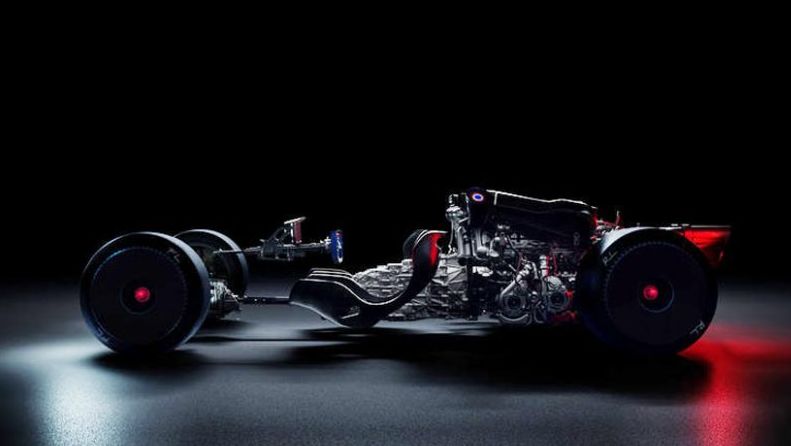

|
A few days ago, on October 20, Bugatti posted the above teaser. An announcement of the (digital) presentation of the next Bugatti model. Apparently, the car is intended for the circuit. The official presentation should have been already 2 months ago during the Monterey Week, which was of course cancelled due to the global pandemic. The presentation will now be organised on-line, though the exact date has not been revealed, just the photograph above, revealing an X-signature of the rear lights. However, even before the presentation, news has come out about this Bugatti track car. A more or less camouflaged car was photographed on the Circuit du Castellet (Paul Ricard) in France. Rumours are that the car will be a one-off (like the "La Voiture Noire") and until now we do not know neither it's name, nor the manner of propulsion, though there are some rumours that it will be 100% electric. However, if it is electric, it will be a new platform, and can not be a one-off based on the Chiron. And, comparing the silhoutte with that of the Chiron, it seems to be too different to be based on that car. Also the windshield is an entirely different shape. There is a large quantity of air-intakes in the body, too much for just the cooling of the brakes, which indicates a large number of radiators, so probably not electric... Well, we will know more, probably within a few weeks.
|

|
Osenat Auction: AUTOMOBILES DE COLLECTION, AUTOMOBILIA, October 20, 2020 Carlo BUGATTI ( 1856-1940), Two Frog-style horns Art-Nouveau style horn, head and legs in nickel-plated bronze on a brass horn body. The exorbitant red tinted glass eyes accentuate the fantastic and caricatural aspect of the animal, which is characteristic of Carlo Bugatti's work influenced by nature, plants and insects, which he interprets to his own taste.
So, I hope we can see one of these (or both) on a Bugatti soon!
|

|
Bonhams' The Bonmont sale, Cheserex, Switzerland, September 20, 2020
The 2007 and 2013 Veyrons which were not sold, say "Amended" on the website, but I believe that is very much the same.... |

|
Bugatti itself calls it a rumor and refuses to comment
.
A report from the U.K.'s "Car" magazine says Volkswagen is in talks to sell Bugatti to Croatian EV startup Rimac.
Bugatti is refusing to comment on a report in the U.K.'s Car magazine that the Volkswagen Group is planning to offload its grandest subsidiary to Croatian performance EV maker Rimac. Given that Bugatti's entire portfolio is currently powered by a quad-turbocharged W-16 engine, that doesn't seem like the most obvious fit—but Rimac is intent on producing an even more powerful all-electric hypercar, so there could actually be some synergies. However, the most synergy is for Volkswagen itself, who is very eager to expand it's knowledge on Electric Vehicles.
Magazine "Car and Driver" did get the chance to interview Bugatti boss Stephan Winkelmann at an event in Italy this weekend. That was before this sale story broke, but some of his answers are very interesting in light of this new development. "You have to make the right step at the right time," he told us. "I think that a [straight switch] would be the better one, as hybrid brings additional weight and complexity."
What Do Bugatti Buyers Want? Other issues with a potential acquisition include the fact that Rimac is working closely with other automakers, several of which already own a stake in it. Porsche has 15 percent of Rimac's stock, with Hyundai, Jaguar Land Rover, and Koenigsegg all holding smaller shares. Rimac is also working with clients including Pininfarina Automobili, which is planning to use the C_Two’s underpinnings as the basis for its forthcoming Battista megacar. Would it be possible to also use the same architecture for a Bugatti? Volkswagen made a huge investment in Bugatti when it was controlled by Ferdinand Piëch. Consider that the Veyron project alone cost around $1.6 billion to make 450 cars. So it would seem strange for the larger company to get rid of its prestigious subsidiary just when it has become modestly profitable. Bugatti is still able to sell every car it can produce, and Winkelmann's strategy of creating more dynamically focused models seems to have resonated well with the company’s clientele. To surrender control of Bugatti could potentially bring leadership in the race to produce the high-performance EVs that will ultimately persuade supercar buyers to shun combustion. If so, Volkswagen Group’s leadership could well see it as a price worth paying. |

|
Gooding & Company: Passion of a Lifetime Auction, Hampton Court Palace, September 5, 2020
|


|
Prices attained for these three magnificent Bugattis are close to the estimate, or just under (Note that the sold prices are including auction costs, while the estimates usually are not...). Still the best prices paid for Bugattis in the last years (though there were a couple of T55's that reached close to, or over 5 million at the beginning of this year), and logical, for these unique automobiles. However, the era that Bugattis would attain twice their estimate or even more, has long passed....
|

|
RM | Online Only Auction, Monterey, USA, August 13 - 15, 2020
|

Bugatti T35 large silkscreen print on aluminum panel by Geoff Bolam, UK.

|
Over the weekend of the 29th will be the commemoration of Bugatti's victory at Le Mans. A group of 25 cars are hoping to convene in France to celebrate this event. The picture was drawn by Richard Wade |


|
Artcurial Motorcars Monaco auction, July 21, 2020
|

|
RM | Online Only Auction: The European sale featuring the Petitjean collection , June 3 - 11, 2020
|

May 25 / 31, 2020
|
The "1939" Delahaye USA Pacific (est: $150-200,000) that is...
Wow! Will you just look at that. But, as you might’ve guessed looking at RM Sotheby’s pre-sale estimate, all is not as it perhaps seems. Despite its title, this is a 21st-century tribute to Bugatti’s voluptuous Type 57S Atlantic by Terry Cook. It's wearing a glassfibre body and is powered by a BMW fuel-injected 12-cylinder engine mated to an automatic transmission, with mod cons including air-con and electric windows. Nevertheless, it is definitely a head-turner! Imagine driving up to the start of a Bugatti Rally in one of those! Bidding closed on 28 May, with the top bid being $220,000. |

April 27, 2020
|
Luxury car manufacturers like to pull out all the stops. The faster and more hallucinatory, the better. However, these cars have a hefty price tag. Owning such a luxury car is often only for the wealthy of the earth. Because there is no harm in dreaming, we have put together a top 5 of the most expensive new cars in the world. In which, as you might expect, the modern Bugatti is somewhat over-represented and classic brands like Ferrari, Lamborghini etcetera do not even appear....
1. Bugatti La Voiture Noire - € 17 million

2. Rolls-Royce Sweptail - € 11.5 million Does the asking price of the Sweptail seem a bit too high? A slightly more affordable Rolls-Royce was launched last year. Maybe this is more within your budget. However, compared with the La Voiture Noire, this Rolls-Royce sure is ugly, especially from the front!

3. Bugatti Centodieci - € 8.1 million
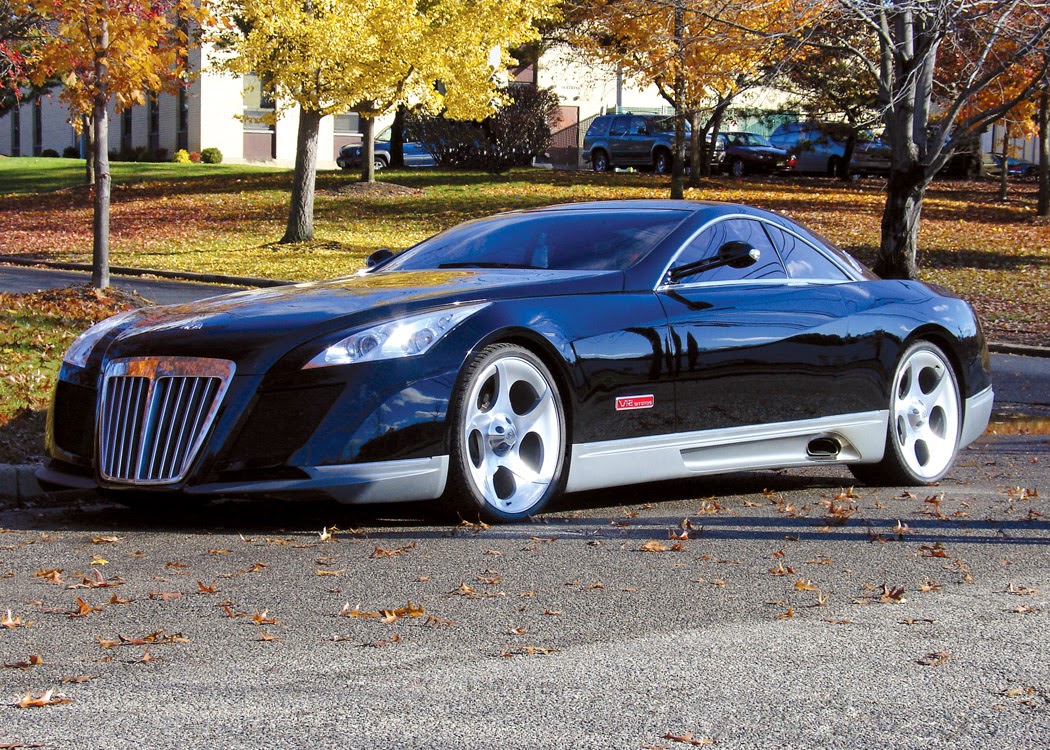
4. Mercedes Benz Maybach Exelero - € 7.3 million
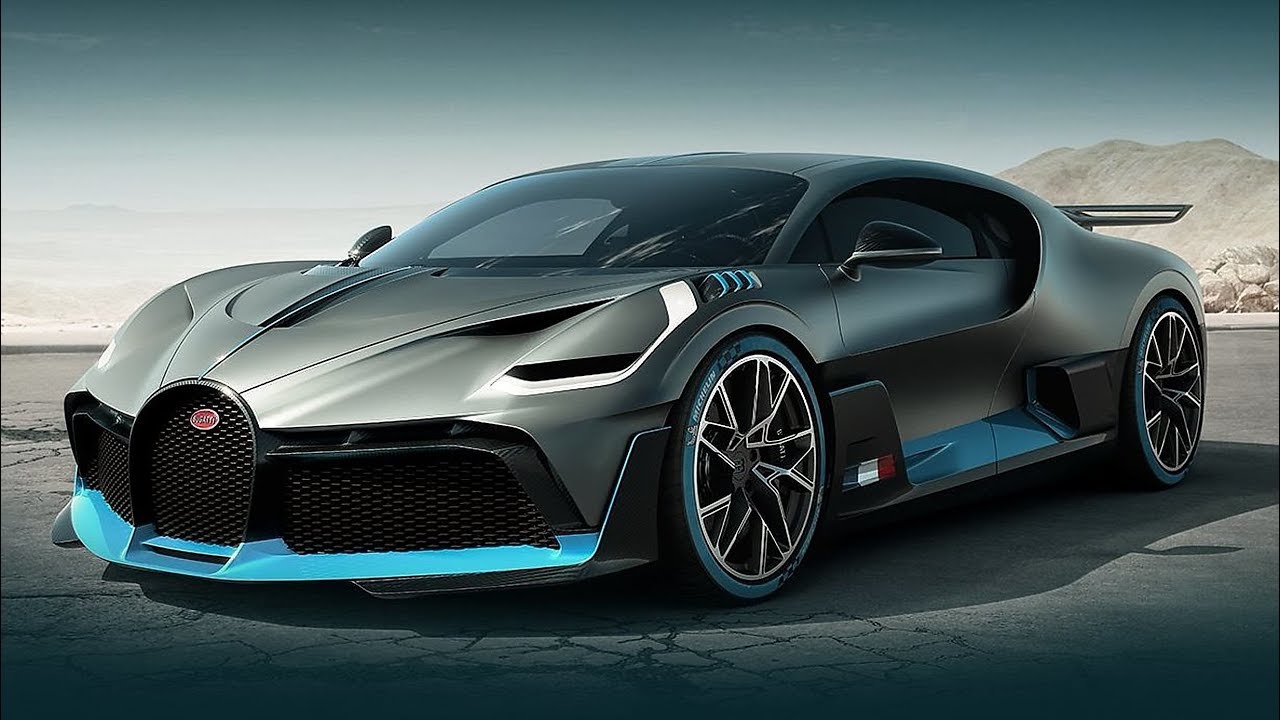
5. Bugatti Divo - € 5 million So, I hear you think, after so much dreaming; get back on your feet and realise that compared with some of the classic Bugattis, these are cheap automobiles. Relatively that is. We know that the Type 57SC Atlantic was sold to Peter Mullin and an associate for over 32 million $. If any of the Royales would come to market now, one should think more in the region of 50 million.... On the other side; one does not always need a deep pocket to buy something completely unique. I did last week, it's the last one in existence, which is something that can't be said of most Bugattis! |

April 12, 2020
|
Of course, this hardly qualifies as "News", as it is more than 110 years ago, and the publication of the document itself was in 1948, so 72 years ago. However, there's not much more news about Bugattis than that at this moment: All rallies, shows and auctions have been either cancelled or postponed... What I do see from the number of parts offered and sold on my website, is that Bugatti owners use this extra time to either make their collection of surplus parts available to those who need them, or to actually use these parts to improve their Bugatti or get further with their project. The above is an excerpt of a publication by the Bugatti company in 1948, which was mostly a review of the history of Ettore and the Bugatti company in Molsheim. The 4-page document was called "Les 50 Années de Génie Mécanique d'Ettore BUGATTI 1898 - 1948" (The fifty years of mechanical genius of Ettore Bugatti, 1898 - 1948) It clearly states that the year 1910 was the year that the company started in Molsheim, translated in English it reads:
So hopefully this will finally end all discussions and that 2020 is the year that the Bugatti company was founded 110 years ago. Of course I would not mind if any of my readers, in these times that outdoor water activities are banned, dive into their libraries of books and other documents, and see if they can help me find the exact date that the Bugatti company was established in Molsheim! Lastly: I hope you and your families are all well, with only some computer virus popping up now and again, but not the real desease!
|

March 21, 2020
|
This first day of spring usually for most of us bitten by the "Bug" marks the start of a season of motoring in the great outdoors, as in the above artwork by Guy Sabran. However, a pandemic of a whole different nature will stop most of us (temporarily) to do so. I haven't heard of Bugatti rallies having been canceled, but they most probably will be.
The entire world is hit by the Covid-19 virus (or Corona in some countries, even called the "Chinese" virus by our friend the president of the USA), and the strict measures in an attempt to control it. The virus even affected this website; I have seen an increase in visitors over the last week, by about a quarter. Rest assured that this website will remain enitrely virus free; you can access it without mouth protection, can even sneeze at it without risk, and do not need to keep 1.5 meters distance.... So for all of you: Heads up, and if you're feeling bored: You can enjoy yourself for several hours reading all Questions, all news items and event announcements since 1995, and all 62 back issues of the Bugatti Revue! Jaap Horst |

March 15, 2020
|
In the past decade, Bugatti SAS has developed more models than they actually produced. Some, like the 4-door Galibier was in fact presented to the public. This "small" front engined V8 Atlantic was not. However, there were rumours about a smaller Bugatti, and thus it seems now, that these rumours were in fact true! So what were the characteristics: A front mounted twin-turbo 4-litre V8, in fact the same one which was used by Bentley and produces more than 500 HP there, it might have produced even more in the Bugatti. Other options would have been a fully electric Atlantic, which would have had 4 electric motors. And there were even plans for a roadster! Pricewise: it would have been "cheaper" than the Chiron, probably around 1 million only.
|



|
So what did indeed happen? Achim Anscheidt remembered the Atlantic, though not fully approved for production yet, was tentatively scheduled to make its public debut at the 2015 edition of the Pebble Beach Concours d'Elegance. The various posters decorating the design studio's walls all reference that date, but the launch was pushed back and the delay proved fatal. The far-reaching Dieselgate scandal fulminated less than a month after the world's wealthiest enthusiasts convened on California's picturesque Pacific coast and sent all of Volkswagen's brands into panic mode. Bugatti worried about its future more than others because it's the smallest and most fragile part of the automaker. "Our president at the time, Wolfgang Dürheimer, pulled all the strings just to get Bugatti to a black zero so we were at least not costing the group money. We needed to be on the safe side to avoid being sold off from one day to another, because, in the first year, nobody could really judge the dimensions of the coming financial catastrophe. Everything was play it safe. It stayed that way for us for nearly two years," Anscheidt explained. The Chiron was at a much more advanced stage in the development process so it was too late to cancel it. "We were five months away from the 2016 Geneva Auto Show where we planned to unveil it," Anscheidt explained. He candidly told me executives would have otherwise pulled the plug on the project to save as much money as possible, and they would have put Bugatti in a "freeze frame" while they riddled out what to do with the brand. "We showed it to Stephan Winkelmann. He said 'I really, really like it, it's super exotic, we would find customers that would be interested in that. But, there's no chance in technical development we can make this fly, we have so many things do to. Can we not create this story, La Voiture Noire, on the base of the Chiron?' That's where it all started," he revealed, referencing the one-off, $19-million coupe unveiled in 2019. The former Lamborghini executive gave Anscheidt the freedom he needed to make the La Voiture Noire a reality, and he played a key role in fast-tracking other projects (like the Divo and the Centodieci) to production. |



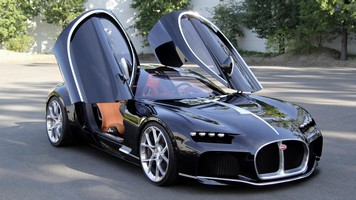
|
And my personal opinion; not an ugly car, except for the radiator-grille, which looks like a horseshoe for one of the fattest horses in equestrian history. However, such a small car, would be much more useable than the Veyron or Chiron are. It even has room in the boot to put your crates of beer you just bought at the supermarket! Below: video by "Supercar blondie", where you can see how annoyingly slow the doors actually open. Though, that may have been faster in the production model.
|

March 14, 2020
|
Bonham's - Amelia Island Auction, USA, March 5, 2020
RM Sotheby's - Amelia Island Auction, USA, March 6 - 7, 2020
So, apart from the T55 and T57 Cabriolet by D'Ieteren, which both sold quite nicely close to their lower estimates, Pasta machines sell better than automobiles!
|
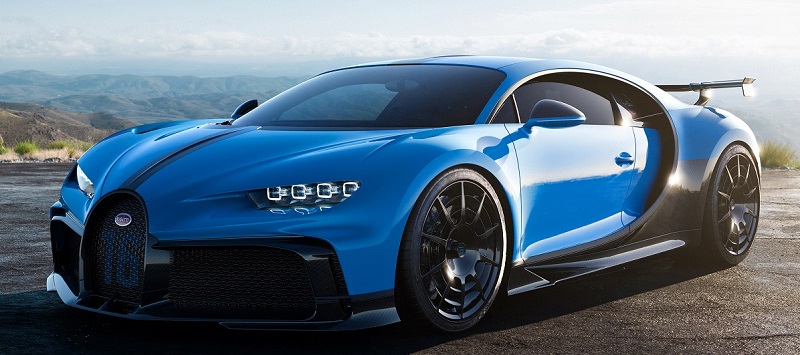
March 4, 2020


March 1, 2020

February 27, 2020
|
On January 9, I published the 110 Years Bugatti Contest. I can't say that I was overwhelmed by the number of reactions I received, but there were interesting and beautiful ones. To start with, the "Bugatti Chassis number contest" only received one reaction. Ulf Kossenjans had 12 out of 18 of the Bugattis (one of which appeared twice) in the 5 collages correct. So he is the deserved winner. Congratulations Ulf!
The correct answers were: |
|
Luckily there were a lot more contestants for the "Bugatti Artistic contest", 10 in total, most of them sent in more than one artwork, different styles, different qualities, different subjects and of course there were miniatures, stories, paintings and digital artwork. After long deliberations amongst the team of judges, considering quality, originality of the subject and of course also the important matter of taste, the winners are Nik Levecque and Geoffrey Severin. Nik sent in an original short story, The Bordoli Bugatti, though in the meantime he is also competing in another category... Most of us know the original Bugatti drawings by Francois Chevalier, as collected in his book "Le petit Bugattiste Illustré" from 2003. There are loads of fantasy Bugattis in the book (see on the right), some of which Geoffrey turned into 3D miniatures, the one at the top of the article, as well as the one shown below. He also made some of his own fantasies in 3D though! Well executed and original! Congratulations Geoffrey! The winners will be asked to take their pick of the available prizes (I'm sorry to say, but I never did receive a reaction from Mr. Winkelmann). All entrants for the contest, from the winners and all other esteemed contestants, will be available soon in a special issue of the Bugatti Revue.
|

January 9, 2020
|
As promised, I present to you the 110 Years of Bugatti and 25 Years of BugattiPage contest! Such a festive year, 2020, does need something special! So, what do we have? In fact there are two contests, one for the mathemagicians amongst the Bugattistes, the other for the Artistic ones!
Bugatti Chassis number contest
Bugatti Artistic contest
|

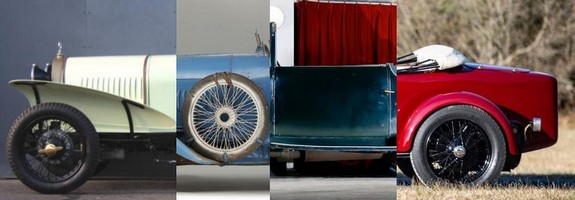
Prizes

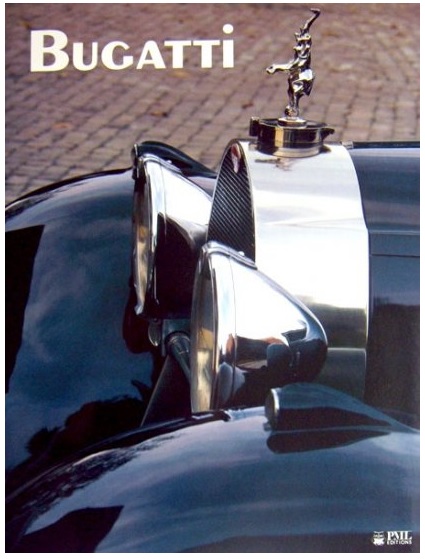

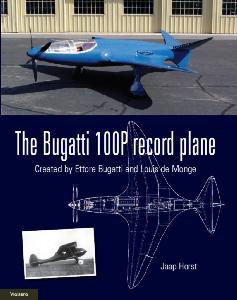
Jury
Timing |
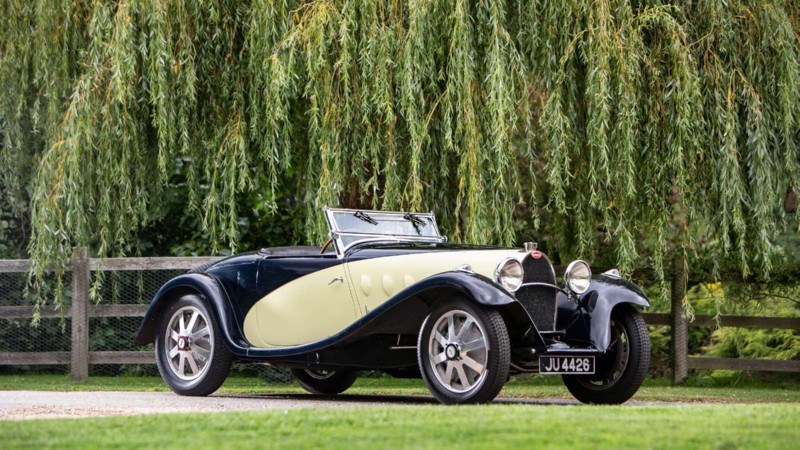
February 14, 2019
|
(Descriptions of most of the classic Bugattis that were on auction in the Retromobile period in Paris can be found here) Worldwide Auctioneers Riyadh auction, November 23, 2019
RM - Sotheby's Arizona Auction, January 16-17, 2020
RM Sotheby's - PARIS Auction, February 5, 2020
Bonhams Auction, Les Grandes Marques du Monde au Grand Palais, Paris, February 6, 2020
Artcurial Retromobile Auction, February 7, 2020
|
|
One may consider the estimates for some of the classic Bugattis rather on the high side, fact remains that the majority did not sell. Of the 12 Bugattis on auction only 4 were sold! The ones that did sell were of course the fabulous Type 55 Figoni (though that one only just touched it's lower estimate) and a few others, as well as the modern Veyrons, the latter always seem to sell at auction. One thing I had missed, and which sold for €2550 at the Bonhams Auction, was a rather special Mascot by Bugatti (and stamped Bugatti!), the "Oiseau de Vitesse" or "Speed bird". It is nickel-plated brass, stamped with Bugatti emblem to underside and with stamped number 37 to underside of tail, of simple form (or one could say, a cubist approach to a flying bird) and believed to be a mascot design for Bugatti Type 37A, 21.5cm long. Apart from the famous Royale Elephant, it is the only mascot by Bugatti that I know of. An example of this mascot was fitted to the Comte Souza Dantos "La Cage a Mouche" ("The Fly Cage") Type 37A Bugatti with coachwork by Million-Guiet. |





February 14, 2020
|
THE NEW RANGE FOR HISTORICAL MODELS FROM THE TRADITIONAL FRENCH BRAND Tradition is one of the core pillars of Bugatti. Bugatti is launching the new “La Maison Pur Sang” program to enable even better care for the historical vehicles in the future. For the first time, the French luxury brand presented the new offer for the certification and restoration of classic Bugatti automobiles at the Rétromobile Motorshow in Paris, the annual international exhibition of classic vehicles.
The New "La Maison Pur Sang" Program The program is being rolled out gradually, based on the certification of the authenticity of historic cars. The genuineness of an automobile is determined by Luigi Galli and his team of experts through intensive research of all available information - historical documents, admission registers, photo documents, or even the comparison of certain component numbers. After successive stages of expansion, the restoration of historic automobiles from Bugatti will also be carried out in the future. “Tradition and history are a great privilege, but also a great responsibility for us. We are always faced by it. We’re conscious of our 110+ years of tradition and want to enable many of our historical vehicles to continue to drive perfectly on the road or to be in collections even after decades,” explains Stephan Winkelmann. "With 'La Maison Pur Sang' we offer an official framework for these automotive treasures. It is very important to protect and preserve Bugatti's tradition and heritage, as well as the existing knowledge of the brand. ”
Bugatti Veyron Turns 15 - with a New Loyalty Program If you want to give your Veyron a fresh new look, you can do so in the future. In the first step, reconfiguration and restoration is offered for the Bugatti Veyron, followed by recertification. Specially trained technicians in Molsheim examine the vehicles closely and record every detail. Then they combine the results in an extensive booklet. Measurement taking as part of the loyalty program and “La Maison Pur Sang” will further support the positive performance of the Bugatti Veyron in recent few years.
|

January 25, 2020
|
LOOKING FORWARD TO ANOTHER EVENTFUL AND EXCITING YEAR AFTER A RECORD-BREAKING 2019 Several outstanding models, a world record and a great 110th (109th) anniversary celebration. 2019 was an eventful year for the French luxury manufacturer of hyper sports cars. Bugatti celebrated its 110th anniversary in this year, making the company one of the oldest hyper sports car marques still in existence. Bugatti also developed several exclusive Edition models in what turned out to be a record year in all respects. “We designed some outstanding hyper sports cars in 2019,” says Stephan Winkelmann, President of Bugatti. These included the Chiro “110 ans Bugatti”, a homage to the French homeland. There was also the “La Voiture Noire”, for Bugatti enthusiasts the most exclusive, beautiful and valuable Gran Tourismo there is. It’s the haute couture of automotive engineering – elegant, powerful and unique. Since the summer, Bugatti has also referenced the Italian intermezzo of the Bugatti marque with the “Centodieci”. At the same time, this is a nod to the Bugatti EB110, the super sports car of the 1990s. “Although we’re proud to look back on our past, we’re looking forward to the future with purpose and pleasure. In 2019, we were again able to increase our production and also deliver more customised Chiron vehicles to our customers. This year, the first Divo model will leave our studio in Molsheim,” explains Stephan Winkelmann. With the Divo, Bugatti has extended its longstanding tradition of coach-building, which involves placing specially designed bodies on an existing chassis. This is a concept which has received great interest. The small series, limited to 40 cars, is sold out even before the official world premiere. Moreover, production of the Chiron is planned through to the end of 2021, and fewer than 100 of the 500 hyper sports cars are still available. Stephan Winkelmann promises further highlights in the model series for 2020. “We’re living in a revolutionary era. We will present further high-performance vehicles in 2020, because Bugatti remains true to its philosophy of developing the best cars in the world.” At the same time, Bugatti will retroactively make its locations worldwide and the kilometres driven by Bugatti vehicles CO2-neutral from 2018. “By doing this, we’re taking responsibility for generations to come and placing Bugatti in a sustainable position for the future,” says Stephan Winkelmann. La Marque is followed by continuing speculation. Rumours revolve around new models and bear witness to the enormous passion of Bugatti enthusiasts worldwide. However, Bugatti will not reveal its plans for the year. “All I can say is this: we’ll be presenting a few interesting surprises in 2020. We have several ideas and are continuing to work on the future of our traditional marque,” promises Winkelmann. |

January 21, 2020
|
A friend of mine sent me a series of photographs, including photographs of the original old registration papers, of a Bugatti T37A. The car allegedly was completely original, original paintwork, first hand. Only 1.8M Euro. Chassis number 37186. However, the paintwork directly rang a bell in my head, I had seen this exact type of paintjob before, a kind of leather-look never before seen on a GP Bugatti. So, it is certainly not original, I saw this exact same car at Retromobile in February 2018, on the stand of Pur Sang, see: www.bugattirevue.com/revue59/retro.htm Scroll down quite a bit... Since I saw it on Retromobile, some more instruments have been added to the dash, as well as some ornaments to the front. They stuck a pair of "old" licenseplates to it and tried to make the car look old. They also found documents from somewhere, which maybe the original documents of the real 37186 (the chassis of which is now in another Bugatti). Or if not, they are convincing fakes. They also stamped the number 37186 in the engine (using the wrong type of numbers). I communicated with another friend of mine in the Bugatti world, he also knew about this car being offered, though for € 450k in that case. So, this car, how original it may look, is a full replica, with Pur Sang origins.
I'm afraid the owner has an asking price which is a factor 10 too high (I'd value it at around 150,000 euro in this shape, if you get it registered in the country you live in. This is usually difficult for a replica these days...
|











The fake number 37186 (Typeface which Bugatti never used) on the engine, and the very convincing document.

January 1, 2020
|
"110 Years of Bugatti?" I can see the questionmarks on your forehead, "Wasn't that last year?" No, it wasn't. 110 Years of Bugatti is now, 2020. Did Bugatti SAS make a mistake? Yes they did, the same as what they did in 2009, when they said it was 100 years of Bugatti. Of course they had to continue that error of 11 years ago last year. But what is the truth about this? In fact yes, Bugatti was talking with investors about starting for himself, already in the summer of 1909. Some sources state that Ettore Bugatti and Ernest Friderich were in the Hardtmühle in Dorlisheim painting the walls of the building towards the end of that year, while another source (Steinhauser) states that it was Friderich alone who was in Dorlisheim during Christmas of 1909, to make preparations to the building, and also was looking for new staff for the company. However, the official papers to register the company were signed not earlier than Januari 1 (or 2, depending on the source), 1910. While (again Steinhauser) states that Bugatti did not come to Molsheim / Dorlisheim before January 13, 1910.
Thus, the conclusion is, that the Bugatti company was founded not before January 1910, and that the exact date of the start of the company changes a bit depending on the source you are using, ranging from January 1, to maybe the 14th of January, 1910. And thus, 110 years of Bugatti can be celebrated the whole year 2020! Luckily, the exact start of the BugattiPage is better known. It started on February 27, 1995, as can be read in the "birthday" article of one year later. In 1996, I also started the Bugatti Revue, on April 1, 1996.
The oldest save of this website (at the then address dutoc74.iotudelft.nl/bugjaap.htm) which I could find was from January 19, 1997, see below. These old versions of a website (any website in fact) can be found on the "Wayback machine", at https://archive.org/web/web.php.
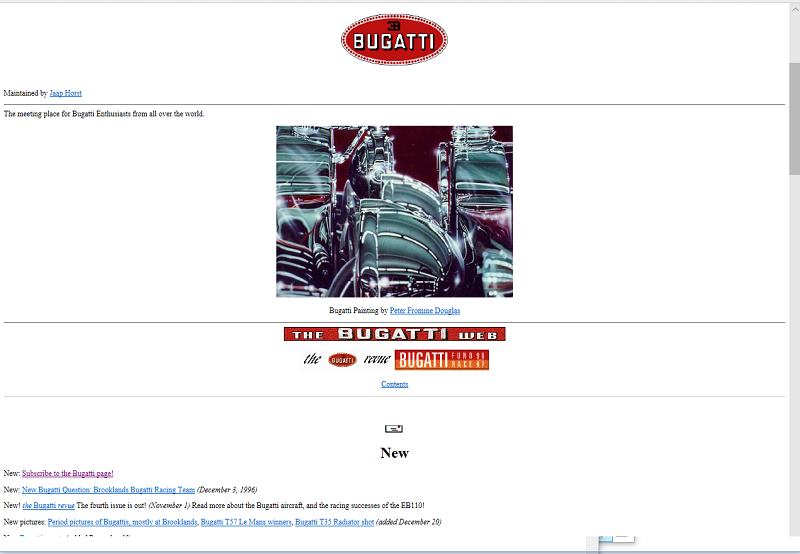
On the occasion of 25 years BugattiPage, I plan on organising a contest again, like I have done in the past. The last one was back in 2008, and was a writing contest. The ones before that were in 2005 (a photo contest) and in 2002 (General contest of art, stories, miniatures). Results of these past contests can be seen in the "past issue" part of the Bugatti Revue. So stay tuned to this page where the announcement for the next contest will be published soon!
|

October 20, 2020 Osenat Auction: AUTOMOBILES DE COLLECTION, AUTOMOBILIA Fontainebleau, France
 Carlo BUGATTI ( 1856-1940),
Two Frog-style horns
Carlo BUGATTI ( 1856-1940),
Two Frog-style horns
Art-Nouveau style horn, head and legs in nickel-plated bronze on a brass horn body.
The exorbitant red tinted glass eyes accentuate the fantastic and caricatural aspect of the animal, which is characteristic of Carlo Bugatti's work influenced by nature, plants and insects, which he interprets to his own taste.
It can be compared to the knife holders in Mr. and Mrs. Lesieutre's collection.
Exhibition:
A similar model (not nickel plated) at the Louwman Automobil Museum in The Hague, The Netherlands.
Bibliography:
"Das Automobil in Der Kunst 1886- 1986", by Peter Stepan, Prestel publishing house in Munich 1986. Work presented under number 110 of the catalogue.
"BugattiPage 2016, opening photograph", by Jaap Horst. Link: BugattiPage.com/2016news.htm#Frog. The unplated version at the Louwman museum looks much more aggressive.
Census: As far as we know, apart from the item in the Automobil in der Kunst catalogue which belongs to a well-known Swiss collection and the one in the Louwman Museum, there is another in the United States in Memphis.





October 30, 2020 Bonhams Auction: The Golden Age of Motoring Sale '1886-1939' London, England






September 5, 2020 Gooding & Company Passion of a Lifetime Auction Hampton Court Palace, UK
|
Three Bugattis, amongst which the most famous Bugatti Type 59 Sports "King Leopold" (Chassis: 57248,
Engine: 5) are among the 16 dream classics in Gooding & Company’s debut London auction later this year. Well, much later in fact due to the Covid-19 Pandemic. The King Leopold 1934 Type 59 Sports is the catalogue’s highest-valued lot and carries a £10m-plus estimate. This may well be the most famous of all sporting Bugattis, having scored massive success in the 1930s, including multiple Grands Prix victories, in the hands of such luminaries as Robert Benoist, Louis Chiron, René Dreyfus, Piero Taruffi, Achille Varzi and Jean-Pierre Wimille. It retired from the sport in 1937 and was then sold to King Leopold III of Belgium – it goes to auction in gloriously unrestored condition. The other Bugattis on offer are hardly much less notable.
|


|
First is the 1937 Type 57S Atalante (Chassis: 57502,
Engine: 26S) , which carries a £7m-plus guide price. One of just 17 built with the breathtaking Atalante coachwork, it was delivered new to racer and enthusiast Earl Howe and recently benefited from a comprehensive restoration. The 1928 Bugatti Type 35C Grand Prix (Chassis: 4871, Engine: 139) , meanwhile, is valued at a mere ‘In excess of £3m’ and is another one to have raced in Grands Prix in period.
|

September 13, 2020 Bugatti Festival 2020 Molsheim, France
This year, there will be short version of the Festival, on the Sunday only (under the currect circumstances, subject to changes).
There will be a short tour, the rest will be open to public , members and participants.
If all will go well, Thomas Valko will be presenting his book there: Ettore Bugatti's Baby.


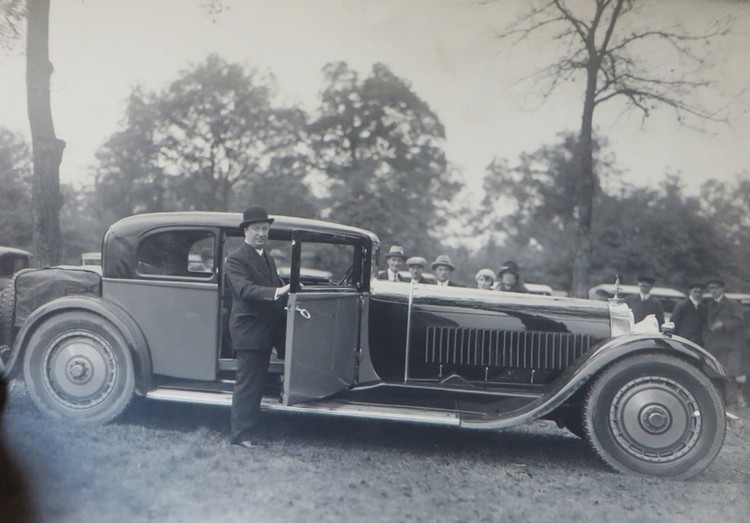
Ettore Bugatti being photographed with his greatest pride, the Royale. The Coach Weymann in this case.
Thanks to Marvin van der Geld

July 25, 2020 Bonhams July Motoring Auction Bicester Heritage, Bicester, UK
1914 Peugeot Bebe
Chassis No. 11034
Estimate 66 000 - 88 000 €







August 3 – 7, 2020 Gooding & Company, Geared online auction no location
1938 Bugatti Type 57 Cabriolet, Coachwork by Letourneur et Marchand
Chassis: 57644, Engine: 470

August 13 - 15, 2020 RM | Online Only Auction- SHIFT/MONTEREY Monterey, USA
1937 Bugatti Type 57C Ventoux Chassis No. 57584, Engine No. 507

July 21, 2020 Artcurial Motorcars Monaco auction Monaco, France
1939 Bugatti 57 Cabriolet 4 places by Vanvooren
Chassis No. 57780, Engine n° 546,
Frame n° 438,
Body n° 2940
Estimate 600 000 - 800 000 €, No reserve




June 3 - 11, 2020 RM | Online Only : The European sale featuring the Petitjean collection no location
 1939 Bugatti Type 57 Cabriolet by Gangloff
, Estimate €750,000 - €850,000
1939 Bugatti Type 57 Cabriolet by Gangloff
, Estimate €750,000 - €850,000
Chassis No. 57731, Engine No. 527

Shakespeare with Bugattis
A collector contemplating one of his many cars....

Bugattianti corona action
By Belgian Willy de Page
Willy is a non profit painter (see galerie-garage-depage.be), he has made a Bugatti T35 painting as an anticorona action
His anticorana time Race is free for auction and at our disposal.
It will be sold to the highest bidder, the proceeds will be going to a non-profit anticorona action! The auction will end on May 15, the non-profit cause will be to the choice of the high-bidder himself. Of course there is an undisclosed minimum.
The painting is quite big: 2.35m high, 1.65m wide, Acrylic on Canvas.
Please send your bids to te BugattiPage Webmaster: J.J.Horst@BugattiPage.com
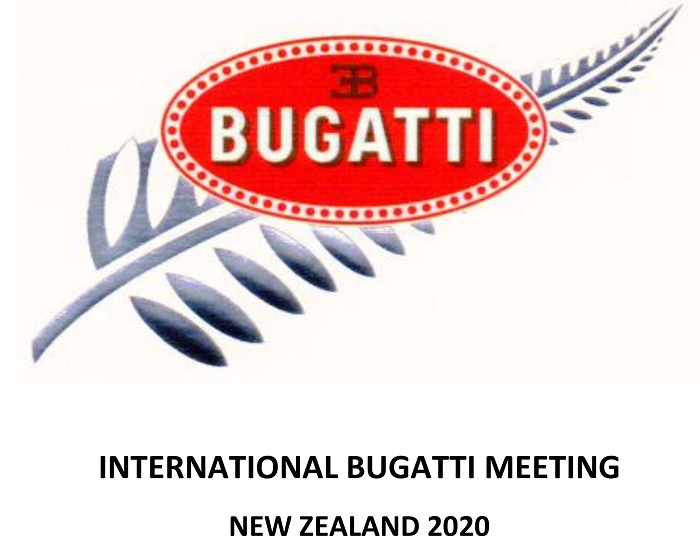
February 15 - 27, 2020 International Bugatti Meeting New Zealand

March 5, 2020 Bonham's - Amelia Island Auction Fernandina Beach golf club, Florida, USA





 1928 Bugatti Type 44 Cabriolet by F. Gerber
"The three-liter Type 44, smooth and fast, was one of the best of all Bugattis", Bill Boddy – The Bugatti Story By the early 1930s, Ettore Bugatti had established an unrivalled reputation for building cars with outstanding performance on road or track; the world's greatest racing drivers enjoyed countless successes aboard the Molsheim factory's products and often chose them for their everyday transport. Considered the finest touring Bugatti of the 1920s, the Type 44 was introduced in 1927 and was produced until 1931. Debuted at the Paris Auto Salon in October 1927, the Type 44 replaced the 2-liter Type 38. It shared much of the Type 38's chassis, although strengthened to withstand the increased power output. 1,095 were built, of which around 10 percent are believed to survive today. The Type 44 was powered by the revised single-overhead-cam straight eight engine, one of the most famous automobile power units of all time. Because of its lengthy run of success, Ettore Bugatti remained committed to his single-cam design, only adopting the double-overhead-camshaft method of valve actuation on the Type 50 of 1930 after considerable prompting by his eldest son, Jean. The Type 44's twin-block, three-valves-per-cylinder, single-plug engine displaced 2,991cc and produced approximately 80bhp, an output good enough for a top speed of over 75mph. Most importantly, the engine received an entirely new crankshaft, one having nine plain bearings for the eight cylinders, thus becoming one of the most solid and reliable crankshaft Bugatti ever made. Driving via a four-speed gate-change gearbox, the Type 44 used a finely tuned leaf spring suspension, and had large, effective drum brakes on all four corners. "The 3-liter Type 44: Smooth, fast and reliable"'- that's how renowned Bugatti historian H.G. Conway headlines his chapter on the Type 44 in the Bugatti book of his The Great Marques series. That really sums up the great Type 44.
It is recorded as such: Bugatti Type 44, number 857 was produced by the works in December 1928, it was subsequently ordered on February 11th, 1928 by Swiss agents Blanc and Paiche of Geneva and delivered to them promptly 5 days after the order. As new, its first owner, who is noted as a Mr. Weckmann or Wegmann (the annotation is not clear), received the Bugatti with coachwork by a well known local builder Graber, of Wichtrach. That coachwork is listed to have been a two seater cabriolet, however there is no visual evidence that survives of the car in this form. Since the mid-1930s and remaining in the same guise to this day, it is understood that the original coachwork was either updated or replaced by another less-known Swiss carrossier, F. Gerber. The car had passed to new ownership in the hands of Ernest Maring a Basel based librarian who showed it at the Concours d'Elegance in Villars in 1935. Some 20 years later Maring remained its custodian when he offered the cabriolet for sale in the Bugatti Owner's Club Bugantics publication in 1955. A published photo shows the coachwork to have fender skirts, wheel discs and an interesting horizontally separated two tone color scheme. It should be noted, that these aesthetic details were very much the mid-1930s styling cues and would have made the car appear contemporary to the newer Type 57 model. Shortly after this, the Bugatti migrated to the U.S. where it has resided ever since. The first of the American keepers was noted collector Dr. Milton Roth of California, and it would seem that he was responsible for repainting the car to a solid dark olive green hue and likely returning the fenders to their 1920s guise. As for 100s of other cars, the '44 was later captured by Bill Harrah for his burgeoning collection in Reno, Nevada, where it would rest alongside many Molsheim products ranging from the original 'bathtub' or 'lobster' Type 10, to 57S and behemoth Royales. This particular car remained with Harrah until after his death and was included in the first dispersal sale in 1984, its buyer was Maurice Schwartz of Boca Raton, here in Florida. Sold by auction in 2006 here in Amelia Island, the car passed briefly to Robert Swarms before changing hands again through Donald Koleman's Competition Motors Ltd. to Dean Edmonds. Owing to his stature, Mr. Edmonds found the seating and placement of the panel behind the seat to make it uncomfortable to drive, so he commissioned Koleman to modify this aspect with a shorter panel. In 2009, it was discovered that the radiator was leaking and the decision was made to have it re-cored in England. Other maintenance continued to be carried out by Cosmopolitan and latterly in Naples with Manfred's Automobile Specialties. Some question has been made of the unusual HCC badge which it wears, this has been verified to relate to the Harrow Car Club in the UK, albeit the connection to its history is uncharted. 44857 was regularly enjoyed by Mr. Edmonds and was even displayed at the ever popular American Bugatti Club New York luncheon at Sardi's in 2010, as well as at the International Bugatti in California that same year. The car was also displayed at the Greenwich Concours d'Elegance in 2012. It has since rested in his collection in Naples, Florida. This car was sold in 2006 by RM Auctions also at Amelia Island, on March 11, 2006 for $165,000. See the 2006 news
|









March 6 - 7, 2020 RM Sotheby's - Amelia Island Auction Amelia Island, Florida, USA
 1927 Bugatti Type 38A Supercharged
1927 Bugatti Type 38A Supercharged
The Type 38A offered here, chassis no. 38470, was one of reportedly 39 examples built with a powerful supercharged engine. Fitted with the factory’s attractive boat-tailed aluminum Grand Sport coachwork, it remained at the factory for over a year before it was delivered at a special price to London dealer Colonel Sorel on 23 October 1928. Colonel Sorel, in turn, sold the car to the original owner, L.G. “Batch” Bachelier, a well-known racing driver of the period, who drove the car in the JCC High Speed trials of July 1929. In the early 1930s the car was sold to Denis Evans, who raced it in the British Automobile Racing Club Open Meeting Mountain racing handicap in 1931 and in the JCC High Speed Trial at Brooklands in 1932. The car’s subsequent owner was named Child and lived near Rotherham, who in turn sold it to a B. Rees of West Hampstead, London. By this time its chassis and body had been shortened to make a two-seater, and the engine was replaced with the current unit. In this form the car was exported from England in the early 1960s and enjoyed a handful of new owners in the USA, including Richard Winer of Fort Lauderdale, Florida, who sold the car to Dr. Terry Bennett of New Hampshire. At the dissolution of Dr. Bennett’s collection in 1991, the Bugatti became one of the early acquisitions in the noted collection of John Rich, Sr., in Pottsville, Pennsylvania. Mr. Rich commissioned a full restoration of the car to its original configuration by noted Bugatti specialist Donald Koleman’s Competition Motors. After restoration the car was regularly shown by Mr. Rich, appearing at the 1993 Pebble Beach Concours d’Elegance, at Meadowbrook in 1994, and Amelia Island in 2004.
Editor: This same car was sold in "The Finest Automobile Auctions, The elegance at Hershey, June 11, 2016", for $440,000, see announcement and auction result in the BugattiPage, 2016.
|












Bugatti Club Nederland (BCN) welcomes Bugattistes from all over the world to the 2020 International Bugatti Meeting.
On behalf of the BCN, the ‘Stichting Evenementen Bugatti’ is responsible for the organization of this event.
From June 7th to 13th 2020 we will stay at the Castel de Pont à Lesse Hotel – entirely rented by us – in the
beautiful Ardennes area of Dinant (Belgium), perfectly suited for touring from there for 5 days. We will visit
interesting and surprising places along beautiful roads.


The garden of Earthly Delights - Bugatti 57S Atlantic
By Piero Costa
The (recent) painting is part of the “Legends” series, a meeting of legends, great works of masters of painting and cars that have left their mark in our recent history, but still able to arouse admiration and much nostalgia.
On the right: L'enigma dell'arrivo (De Chiricio) - Bugatti Type 46

Until January 27, 2020 Bugatti Exhibition Polytecnic museum, Moscow, Russia
With info, miniatures and some cars.



Thanks to Dmitriy V. Lisin

January 16-17, 2020 RM - Sotheby's Arizona Auction Phoenix, Arizona, USA

February 5 - 9, 2020 Retromobile Porte de Versailles, Paris, France
I have no confirmations yet, but usually there are more Bugattis at Retromobile then expected.
And always something unusual....


February 5, 2020 RM Sotheby's - PARIS Auction Place Vauban, Paris, France





February 6, 2020 Bonhams Auction, Les Grandes Marques du Monde au Grand Palais Paris, France



 1926 Bugatti Type 39,
Chassis no. 4607 (No further info yet)
1926 Bugatti Type 39,
Chassis no. 4607 (No further info yet) |


















February 7, 2020 Artcurial Retromobile Auction Retromobile, Paris, France
